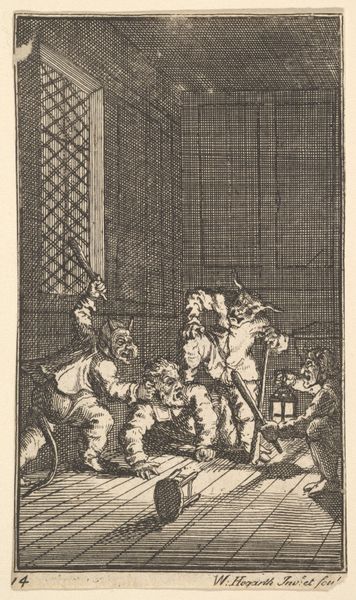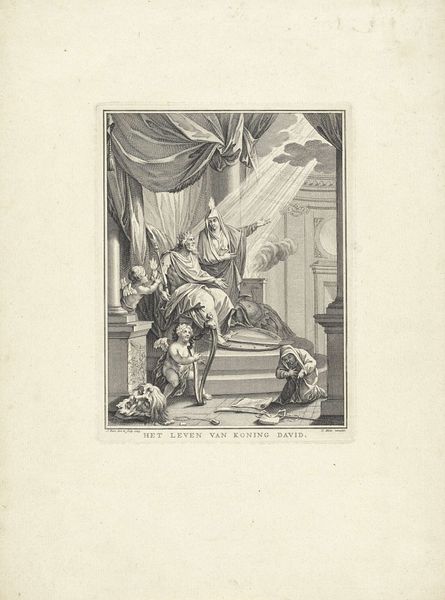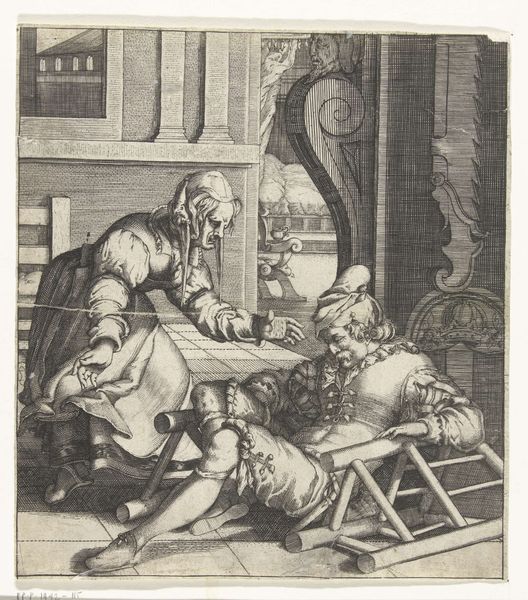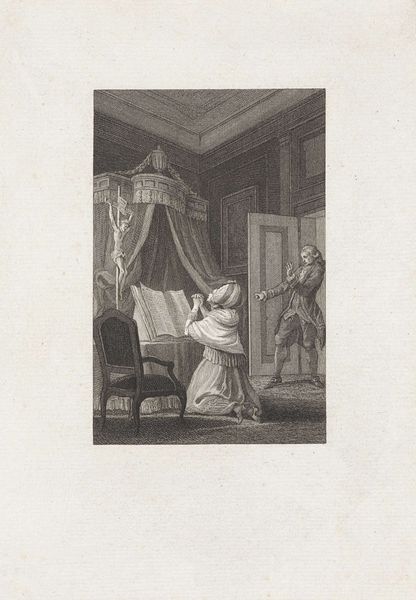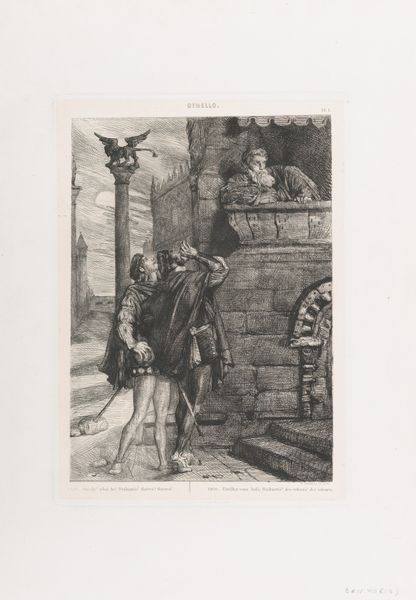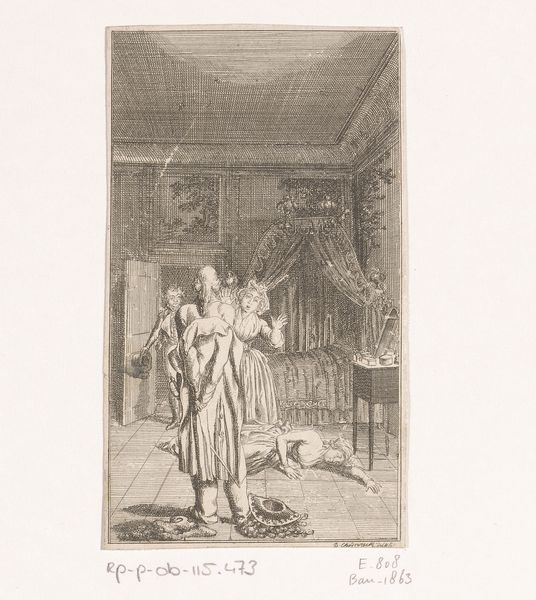
print, etching, engraving
#
portrait
#
baroque
# print
#
etching
#
old engraving style
#
figuration
#
form
#
pen-ink sketch
#
line
#
genre-painting
#
engraving
Dimensions: height 111 mm, width 69 mm
Copyright: Rijks Museum: Open Domain
Curator: This intriguing print, “Wijsgeer aan een schrijftafel,” which translates to “Philosopher at a Writing Table," is believed to have been created sometime between 1655 and 1731. Editor: My first impression is of a world steeped in intellectual curiosity. The man’s intense gaze and the detail in his opulent garments suggest a person of substantial learning. Curator: Indeed, prints like this were popular, circulating images and ideas among a growing literate public. They often functioned as a visual shorthand, associating particular visual cues, like the scholar's garments, with philosophical discourse. Editor: Look at that armillary sphere hanging in the background, a beautiful and intricate instrument to model celestial objects. Its inclusion here speaks to the inseparable relationship between knowledge and our human drive to classify, explain, and control the cosmos through symbolic form. Curator: Yes, and consider the setting. The heavy drape suggests privilege, access to a private study, a place free from the public debates. And the act of writing…that’s not just an action; it represents the very act of shaping public opinion. Editor: Note, too, how his pose suggests he's on the precipice of discovery, caught in a moment before ink touches the page. It gives me the sense that creative processes—be it philosophy, science, art, or the divine—begin as abstract contemplations that demand corporeal form to manifest. Curator: And prints, as a reproductive medium, contributed to and democratized that manifestation. By making images widely available, engravings became powerful tools for social messaging. Editor: It’s the contrast of the ephemeral versus the permanent. While our lives are transient, artistic depictions of them or attempts to systematize and classify our world outlive the artist who conceptualized them. The symbolic and aesthetic remain as lasting beacons to ourselves, each other, and our place in the cosmic dance. Curator: Thinking about it now, I wonder if that interplay is not the piece's defining legacy after all. Editor: A timeless reminder to us all to use symbolism mindfully, to ask whether the meanings encoded reflect the needs and truths of society at large.
Comments
No comments
Be the first to comment and join the conversation on the ultimate creative platform.
